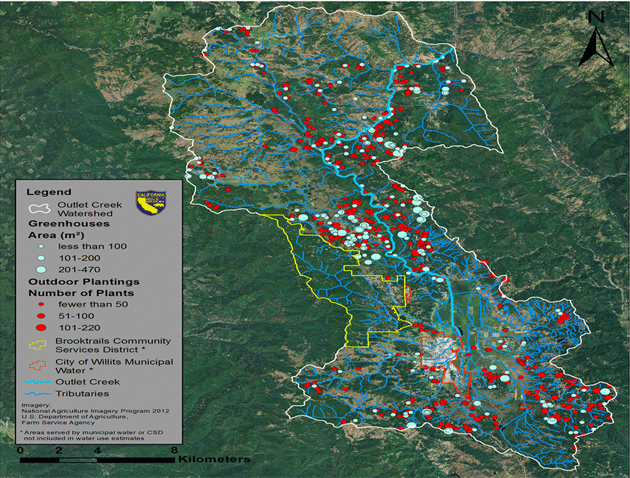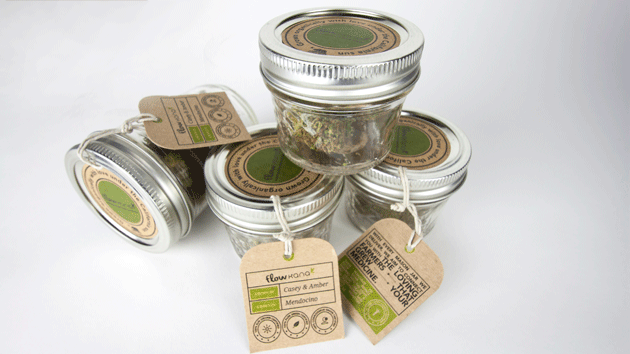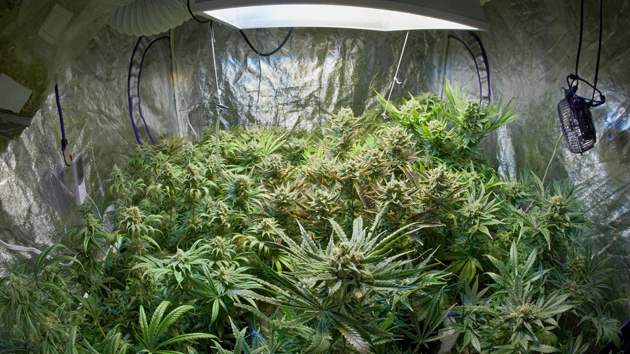
Northern California pot farmers are using up all of the water that normally supports key populations of the region’s federally protected salmon and steelhead trout.
That, at least, is the conclusion of a new study, published last week in the journal PLOS One, that examined four California watersheds where salmon and trout are known to spawn. In the three watersheds with intensive pot cultivation, illegal marijuana farms literally sucked up all of the water during the streams’ summer low-flow period, leaving nothing to support the fish.
Author Scott Bauer, a biologist with the state department of fish and wildlife, estimated the size and location of outdoor and greenhouse pot farms by looking at Google Earth images and accompanying drug enforcement officers on raids. He did not include “indoor” grows—marijuana grown under lamps in buildings.
After visiting 32 marijuana greenhouses in eight locations and averaging the results, Bauer extrapolated his findings to all greenhouses in the study area—virtually nothing else is grown in greenhouses in this part of the country. The sites contained marijuana plants at a density of about one per square meter, with each plant (taking waste and other factors into account) using about six gallons of water a day. Overall, he calculated, pot operations within the study yielded 112,000 plants, and consumed 673,000 gallons of water every day.
And that is water the area’s fish badly need. The Coho salmon population is listed as threatened under both state and federal Endangered Species Acts, and is designated as a key population to maintain or improve as part of the state’s recovery plan.
Bauer collected his data last year, at a time when California’s drought had already become its worst in more than 1,200 years. When I spoke to him at the time, he told me that pot farming had surpassed logging and development to become the single biggest threat to the area’s salmon. Now that that the drought is expected to extend into a fourth year, the same streams could run dry again this summer, and remain so for an even longer period of time.
Overall, the outdoor and greenhouse grows consume more than 60 million gallons of water a day during the growing season—50 percent more than is used by all the residents of San Francisco.
“Clearly, water demands for the existing level of marijuana cultivation in many Northern California watersheds are unsustainable and are likely contributing to the decline of sensitive aquatic species in the region,” Bauer’s study concludes. “Given the specter of climate change”—and the attendant rise of megadroughts—”the current scale of marijuana cultivation in Northern California could be catastrophic for aquatic species.”
















